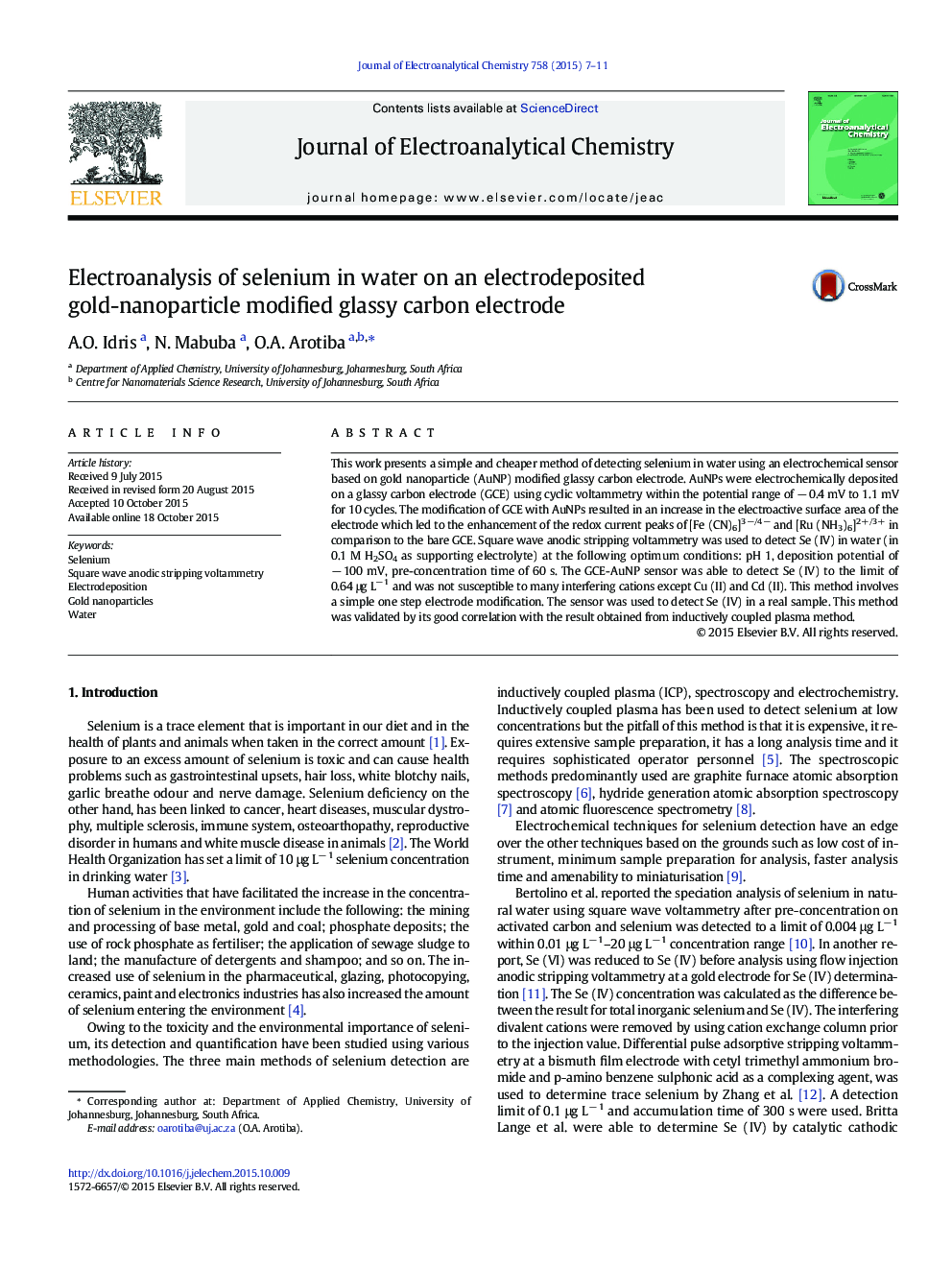| Article ID | Journal | Published Year | Pages | File Type |
|---|---|---|---|---|
| 218236 | Journal of Electroanalytical Chemistry | 2015 | 5 Pages |
•Au modified glassy carbon electrode enhanced the voltammetric signal of Se4 +.•A low detection limit of 0.64 μg L− 1 was obtained from the sensor.•Se4 + in real water was quantified with a good correlation with ICP-OES.
This work presents a simple and cheaper method of detecting selenium in water using an electrochemical sensor based on gold nanoparticle (AuNP) modified glassy carbon electrode. AuNPs were electrochemically deposited on a glassy carbon electrode (GCE) using cyclic voltammetry within the potential range of − 0.4 mV to 1.1 mV for 10 cycles. The modification of GCE with AuNPs resulted in an increase in the electroactive surface area of the electrode which led to the enhancement of the redox current peaks of [Fe (CN)6]3 −/4 − and [Ru (NH3)6]2 +/3 + in comparison to the bare GCE. Square wave anodic stripping voltammetry was used to detect Se (IV) in water (in 0.1 M H2SO4 as supporting electrolyte) at the following optimum conditions: pH 1, deposition potential of − 100 mV, pre-concentration time of 60 s. The GCE-AuNP sensor was able to detect Se (IV) to the limit of 0.64 μg L− 1 and was not susceptible to many interfering cations except Cu (II) and Cd (II). This method involves a simple one step electrode modification. The sensor was used to detect Se (IV) in a real sample. This method was validated by its good correlation with the result obtained from inductively coupled plasma method.
